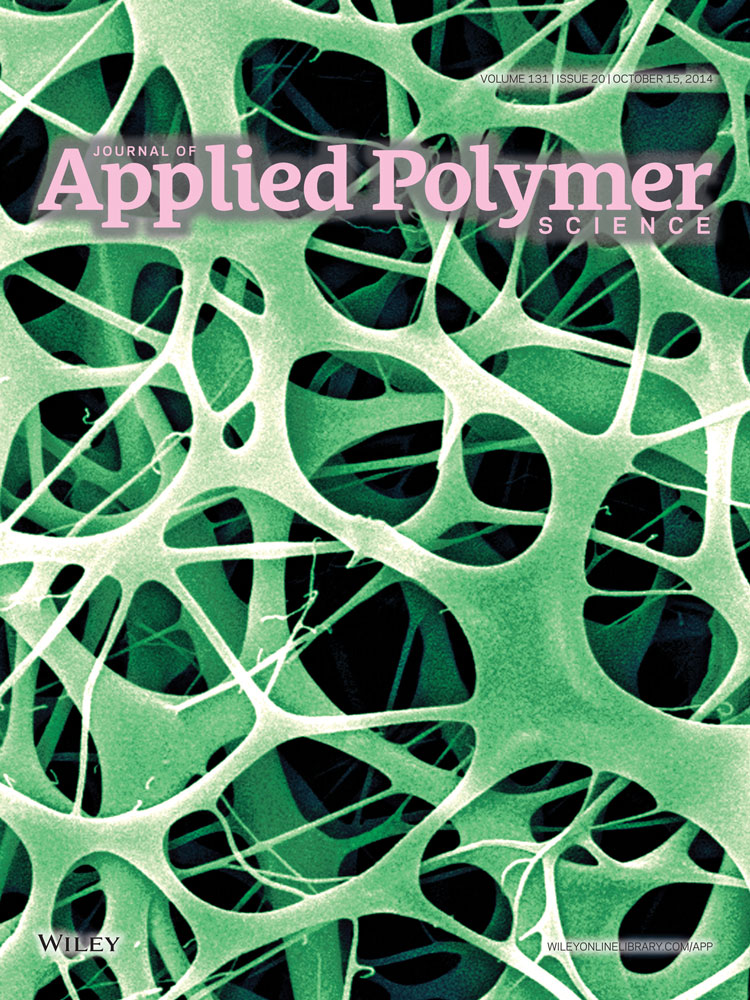Synthesis and characterization of polyhydroxylated polybutadiene binding 2,2′-thiobis(4-methyl-6-tert-butylphenol) with isophorone diisocyanate
ABSTRACT
A macromolecular hindered phenol antioxidant, polyhydroxylated polybutadiene containing thioether binding 2,2′-thiobis(4-methyl-6-tert-butylphenol) (PHPBT-b-TPH), was synthesized via a two-step nucleophilic addition reaction using isophorone diisocyanate (IPDI) as linkage. First, the OH groups of PHPBT reacted with secondary NCO groups of IPDI to form the adduct PHPBT-NCO, then the PHPBT-b-TPH was obtained by one phenolic OH of 2,2′-thiobis(4-methyl-6-tert-butylphenol) (TPH) reacting with the PHPBT-NCO. The PHPBT-b-TPH was characterized by Fourier transform infrared spectroscopy, 1H nuclear magnetic resonance (1H-NMR), 13C-NMR, and thermogravimetric analysis, and its antioxidant activity in natural rubber was studied by an accelerated aging test. Influences of reaction conditions on the two nucleophilic reactions between OH group and NCO group were investigated. In addition, catalytic mechanism for the reaction between PHPBT-NCO and TPH was discussed. The results showed that the adduct PHPBT-NCO could be obtained by using dibutyltin dilaurate (DBTDL) as catalyst, and the suitable temperature and DBTDL amount were 35°C and 3 wt %, respectively. However, triethylamine (TEA) was more efficient than DBTDL to catalyze the reaction between PHPBT-NCO and TPH because of steric hindrance effect. In addition, it was found that the thermal stability and antioxidant activity of PHPBT-b-TPH were higher than those of the low molecular weight antioxidant TPH. © 2014 Wiley Periodicals, Inc. J. Appl. Polym. Sci. 2014, 131, 40942.




